



China’s Polar Silk Road via the Arctic Sea Route offers faster Asia-Europe trade, but experts warn it will raise emissions, create new carbon hotspots, harm Arctic ecosystems and indigenous communities, and worsen climate inequality unless strong environmental governance intervenes.

Copyright infringement not intended
Picture Courtesy: DOWNTOEARTH
China’s ‘Polar Silk Road’ project passing through the Arctic offers a faster Asia-Europe trade route but raises severe environmental concerns due to ice melt and climate risks.
The Polar Silk Road (also called the Arctic Silk Road) is an infrastructural-connectivity project by China to integrate Arctic sea routes (especially the Northern Sea Route, along Russia’s Arctic coast) into its Belt and Road / maritime projection strategy.
In its 2018 “Arctic Policy,” China formally identified the Arctic as a domain of interest, asserting itself as a “Near-Arctic State” and announced to engage in shipping, resource development, scientific research, and governance.
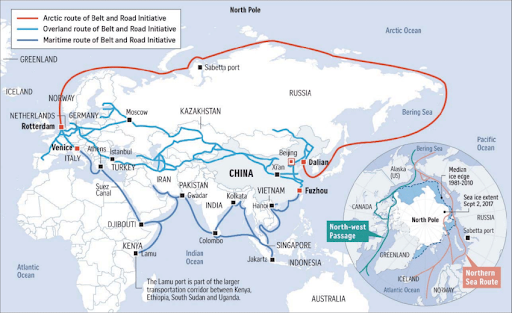
Rapid Ice Melt and Warming
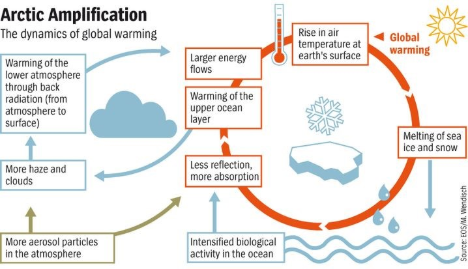
Technological & Logistical Advances
Political & Commercial Push
Shorter Trade Routes and Economic Efficiency
Resource Access & Energy Security
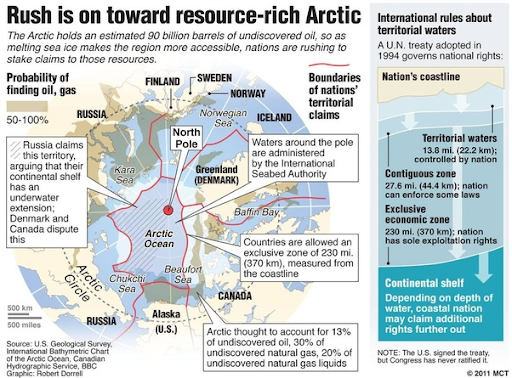
Strategic Leverage & Influence in Arctic Governance
Challenges to Arctic State Primacy & Norms
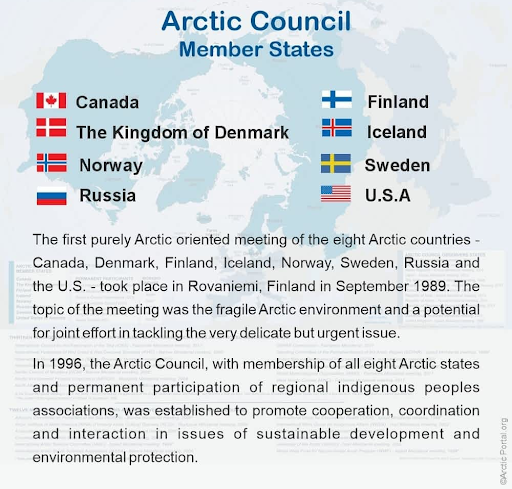
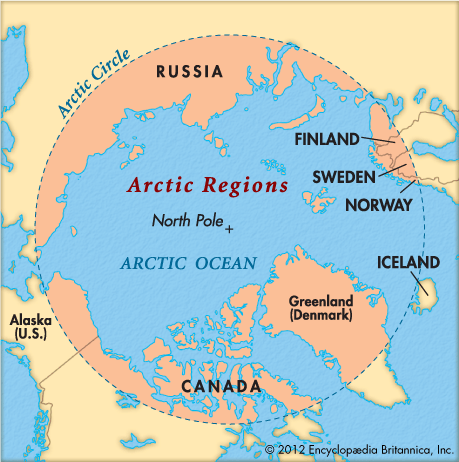
Russia-China Arctic Partnership, and Its Limits
Countermeasures by Arctic / Western States
Geopolitical Tension & Strategic Competition
Environmental Concerns
Greenhouse Gas & Carbon Emissions: Study predicts Arctic shipping emissions could rise dramatically (e.g. from 1 Mt CO₂e in 2022 to over 117 Mt by 2100 under high-traffic scenarios).
Black Carbon / Albedo Feedback: Ships emit black carbon (soot), which deposits on snow and ice, darkening surfaces, reducing reflectivity (albedo), leading to more absorption of solar heat and speeding melting. Dangerous feedback loop: more shipping → more soot deposition → more ice melt → easier shipping.
Permafrost Thaw & Methane Release: Warming in the Arctic can thaw permafrost, releasing methane (a
potent greenhouse gas), magnifying climate change impacts globally.
Oil / Spill Risks, Chemical Pollution: In the remote, pristine Arctic, spills or accidents have far greater damage and limited cleanup capacity.
Disturbance to Marine Ecosystems & Species: Noise pollution, vessel presence, and physical disturbance affect marine mammals (whales, seals), fish populations, migration routes.
Ethical & Social Concerns
Environmental Justice & Inequity: Benefits of the PSR (reduced transit, trade revenues, resource access) accrue mostly to foreign major powers; the ecological costs (warming, pollution, biodiversity loss) disproportionately fall on the Arctic region and its inhabitants.
Consent, Participation & Rights of Indigenous Peoples: Decisions about shipping, infrastructure, resource development should involve Arctic indigenous communities; their rights, voices, and traditional knowledge must not be sidelined.
Tipping Points & Irreversibility: Some environmental damage (ice loss, species extinction, permafrost carbon release) is difficult or impossible to reverse. Ethical responsibility demands precaution, not regret.
Risk vs Reward Imbalance: Commercial advantage vs existential territorial impacts pose moral dilemmas. Is it fair to gamble with fragile environments for economic gain?
Transit Efficiency & Cost Reduction
Shorter sea routes between East Asia and Europe (or even North America via the Arctic) can reduce fuel, time, and freight costs where conditions allow.
Diversified Supply Chains
Companies might favor multiple route options (Arctic, southern sea lanes) to reduce risk from chokepoints, piracy, geopolitical closure.
Shifting Maritime Hubs / Gateways
New port hubs, logistics nodes, icebreaker support bases, and transshipment facilities along Arctic coasts may rise. Coastal Arctic states, or regions adjacent to the Arctic, may gain new geoeconomic relevance.
Integration with Other Corridors
PSR could integrate with transcontinental rail, pipelines, and overland routes (Eurasian land corridors), forming multi-modal connectivity. Maritime + land corridors could reshape Eurasian trade patterns.
Selective Use, Not Universal Adoption
It is unlikely the PSR will replace traditional southern routes fully, given unpredictability, seasonal limits, insurance risk, and infrastructure gaps. It is more likely to complement existing routes in niches.
Arctic Interest & Observer Status
India is an observer state in the Arctic Council. India has a polar research station (“Himadri”) in Svalbard and conducts Arctic scientific missions.
Trade & Economic Potential
India sees the possibility that Arctic routes could lower shipping costs and transit times for exports to Europe.
Strategic & Security Concerns vis-à-vis China
India views China’s Arctic expansion (via PSR) as part of a broader pattern of Chinese global connectivity and strategic ambition, which could tilt influence balances.
Climate / Cryosphere Linkages
The Arctic and the Himalayas (“Third Pole”) are linked in global climate systems. Changes in the Arctic (melting, circulation changes) may affect the Indian monsoon, glacial melt, and extreme weather events in South Asia.
Governance & Norm Advocacy
India seeks to play a normative role, advocating for rules-based, equitable, sustainable governance in the Arctic.
India’s stance is cautious but engaged: it does not have the direct influence in Arctic states or China but can leverage science, diplomacy, and alliances to assert its interests.
Establish a “Green PSR” Framework / Environmental Mandates
Strengthen Arctic-Specific Regulatory Systems
Inclusive Governance & Indigenous Participation
China’s Polar Silk Road speeds up Asia-Europe trade, but experts warn it increases emissions, creates carbon hotspots, threatens Arctic ecosystems and indigenous communities, and deepens climate inequality without strict governance.
Source: DOWNTOEARTH
|
PRACTICE QUESTION Q. Critically analyze the geopolitical implications of China's 'Polar Silk Road' initiative. 150 words |
Established in 1996, the Arctic Council is a high-level intergovernmental forum promoting cooperation among Arctic states, Indigenous communities, and other inhabitants on common Arctic issues.
Eight Arctic States with territory in the region are members.
The Polar Silk Road is a strategic initiative put forth by China to develop Arctic shipping lanes as an extension of its broader Belt and Road Initiative (BRI). It leverages melting Arctic sea ice to create new maritime routes that offer shorter travel times for trade between Asia and Europe.


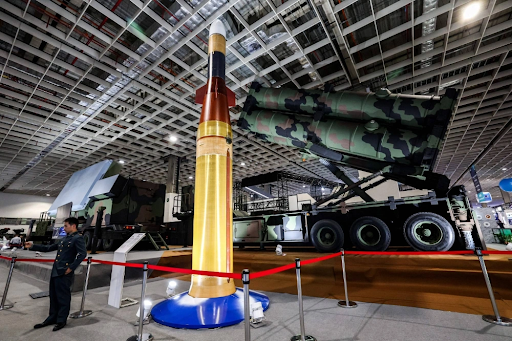
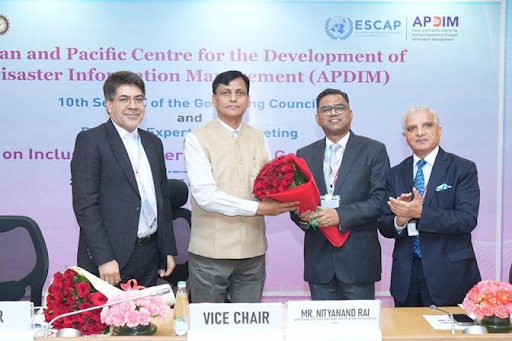



© 2025 iasgyan. All right reserved